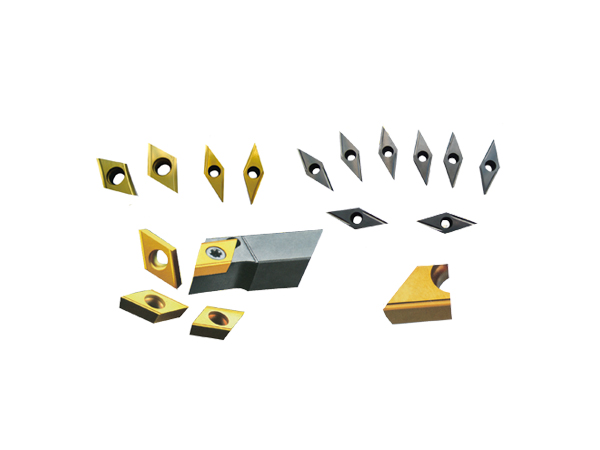Focus on tool design and R & D
Precision cutting tools from Germanymanufacturer
+86 133-9231-4699
Focus on tool design and R & D
+86 133-9231-4699

CNC machining tools must adapt to the characteristics of high speed, high efficiency and high degree of automation of CNC machine tools. Generally, they should include general-purpose tools, general-purpose connection tool holders and a small number of special-purpose tool holders. The tool holder must be connected to the tool and mounted on the power head of the machine tool, so it has gradually been standardized and serialized. There are many ways to classify CNC tools.
1. According to the tool structure, it can be divided into: ①Integral type; ②Inlaid type, using welding or machine clamp connection, machine clamp type can be divided into two types: non-indexable and indexable; ③special type, such as Compound tools, shock-absorbing tools, etc.
2. According to the materials used to manufacture the tools, it can be divided into: ① high-speed steel tools; ② cemented carbide tools; ③ diamond tools; ④ tools of other materials, such as cubic boron nitride tools, ceramic tools, etc.
3. From the cutting process, it can be divided into: ① turning tools, including outer circle, inner hole, thread, cutting tools, etc.; ② drilling tools, including drills, reamers, taps, etc.; ③ boring tools ;④Milling tools, etc.
In order to meet the requirements of CNC machine tools for tool durability, stability, easy adjustment, and exchangeability, in recent years, machine-clamped indexable tools have been widely used, and the number has reached 30-40% of the entire CNC tools. The amount of metal removal accounts for 80 to 90% of the total. Compared with the tools used on ordinary machine tools, CNC tools have many different requirements, mainly including the following characteristics:
①Good rigidity (especially rough machining tools), high precision, vibration resistance and small thermal deformation;
②Good interchangeability, convenient for quick tool change;
③High life, stable and reliable cutting performance;
④The size of the tool is easy to adjust to reduce the tool change adjustment time;
⑤The tool should be able to reliably break or roll chips to facilitate the removal of chips;
⑥Serialization and standardization to facilitate programming and tool management.
The tool selection is carried out under the human-computer interaction state of CNC programming. The correct selection of tools and tool holders should be based on the processing capacity of the machine tool, the properties of the workpiece material, the processing procedure, the cutting amount and other related factors.
The general principle of tool selection is: convenient installation and adjustment, good rigidity, high durability and high precision. On the premise of meeting the processing requirements, try to choose a shorter tool holder to improve the rigidity of tool processing. When selecting a tool, the size of the tool must be adapted to the surface size of the workpiece to be processed. In production, end mills are often used to process the peripheral contours of plane parts; when milling planes, carbide blade milling cutters should be selected; when processing bosses and grooves, high-speed steel end mills should be selected; rough surface or rough machining When drilling holes, you can choose corn milling cutters with carbide inserts; for the processing of some three-dimensional profiles and variable bevel contours, ball end milling cutters, ring milling cutters, tapered milling cutters and disc milling cutters are often used.
During free-form surface (mold) processing, the end cutting speed of the ball-end tool is zero. Therefore, in order to ensure the machining accuracy, the cutting line spacing generally adopts the top-end close pitch, so the ball end is often used for surface finishing. The flat-end tool is superior to the ball-end tool in terms of surface processing quality and cutting efficiency. Therefore, as long as it is guaranteed not to cut, whether it is roughing or finishing of curved surfaces, flat-end tools should be preferred.
In addition, the durability and accuracy of the tool have a great relationship with the price of the tool. It must be noted that in most cases, the selected tool increases the tool cost, but the resulting processing quality and processing The improvement of efficiency can greatly reduce the overall processing cost.
On the machining center, various tools are installed in the tool magazine, and the tool selection and tool change actions are carried out at any time according to the program regulations. Therefore, standard tool holders must be used so that standard tools used in drilling, boring, expanding, milling and other processes can be quickly and accurately installed on the spindle or tool magazine of the machine tool. The programmer should understand the structure size, adjustment method and adjustment range of the tool holder used on the machine tool in order to determine the radial and axial dimensions of the tool during programming. At present, my country's machining center adopts the TSG tool system, and its tool holders have two types of straight shanks (3 specifications) and taper shanks (4 specifications), including a total of 16 tool holders for different purposes.

In the machining process of economical CNC machine tools, since the sharpening, measurement and replacement of tools are mostly performed manually, which takes a long time to assist, it is necessary to arrange the order of the tools in a reasonable manner. Generally, the following principles should be followed:
①Reduce the number of tools as much as possible;
②After a tool is clamped, all the processing steps that it can carry out should be completed;
③The roughing and finishing tools should be used separately, even if they are tools of the same size;
④Milling first and then drilling;
⑤Finish surface finish first, then finish two-dimensional contour finish;
⑥When possible, the automatic tool change function of CNC machine tools should be used as much as possible to improve production efficiency.
The principle of reasonable selection of cutting parameters is: during rough machining, productivity is generally improved, but economy and machining costs should also be considered; semi-finishing and finishing should be taken into account while ensuring the quality of machining Cutting efficiency, economy and processing cost. The specific value should be determined according to the machine tool manual, cutting parameter manual, and combined with experience. Specifically, the following factors should be considered:
①Cutting depth t. When the rigidity of the machine tool, workpiece and tool permits, t is equal to the machining allowance, which is an effective measure to improve productivity. In order to ensure the machining accuracy and surface roughness of the parts, a certain margin should generally be left for finishing. The finishing allowance of CNC machine tools can be slightly smaller than that of ordinary machine tools.
②Cutting width L. Generally, L is proportional to the tool diameter d and inversely proportional to the cutting depth. During the processing of economical CNC machine tools, the general value range of L is: L=(0.6~0.9)d.
③Cutting speed v. Increasing v is also a measure to improve productivity, but v has a close relationship with tool durability. With the increase of v, the tool durability declines sharply, so the choice of v mainly depends on the tool durability. In addition, the cutting speed is also closely related to the processing material. For example, when milling alloy steel 30CrNi2MoVA with an end mill, v can be about 8m/min; when milling aluminum alloy with the same end mill, v can be more than 200m/min. .
④ Spindle speed n (r/min). The spindle speed is generally selected according to the cutting speed v. The calculation formula is: v=nd/1000. The control panel of the CNC machine tool is generally equipped with a spindle speed adjustment (magnification) switch, which can adjust the spindle speed in integer multiples during the machining process.
⑤The feed speed vF.vF should be selected according to the machining accuracy and surface roughness requirements of the part, as well as the tool and workpiece material. The increase in vF can also improve production efficiency. When the roughness of the processed surface is low, vF can be selected to be larger. During processing, vF can also be adjusted manually through the trim switch on the machine control panel, but the maximum feed rate is limited by the rigidity of the equipment and the performance of the feed system.
Mobile QR code

Official account

Applet



